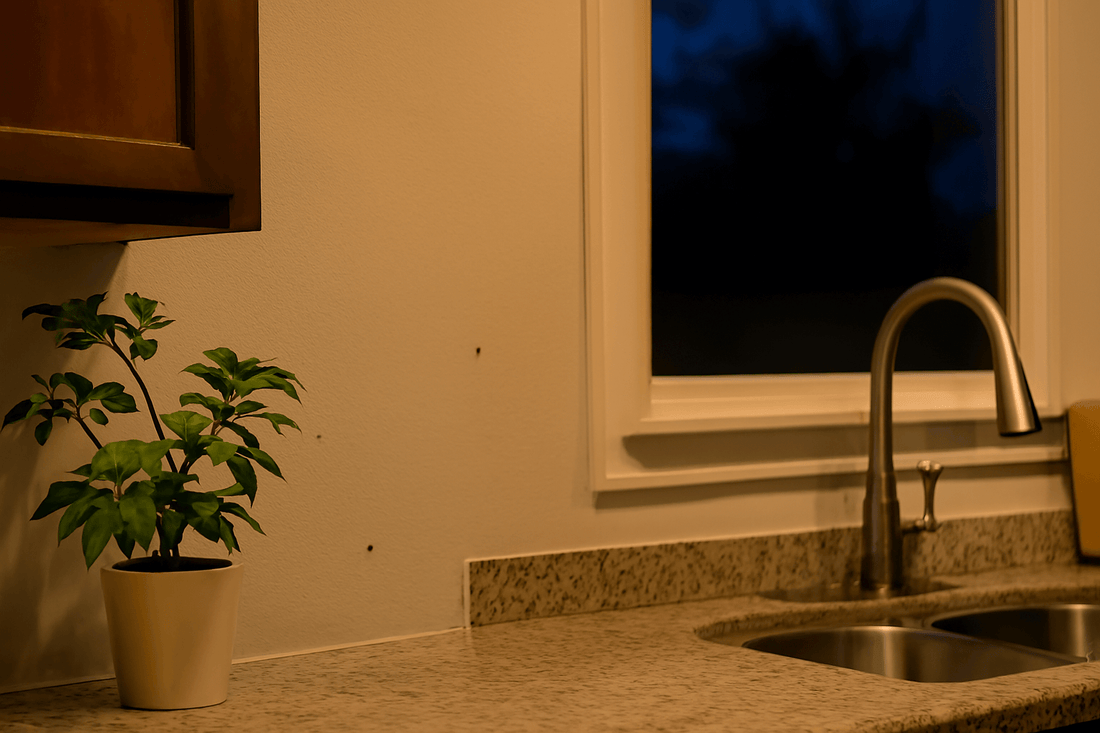If you’ve bought a fly zapper indoor and still find bugs buzzing around your home, the problem might not be the device—it could be where you placed it. Indoor bug zappers are incredibly effective when used correctly, but many people don’t realize that placement is key to making the most of your investment. Whether it’s your kitchen, living room, or bedroom, learning the right way to use an electric fly zapper can help you get rid of annoying flies, mosquitoes, gnats, and other flying pests for good. You can also check out How Fly Zapper Indoor Work? to better understand the technology behind it.
1. Choose the Right Room for Maximum Exposure
Start by picking a room where flying insects are most active. Kitchens are a common hotspot due to food smells and trash cans, so fly zapper indoor placement for kitchen use is ideal. Bedrooms can also attract mosquitoes and gnats, making a UV fly zapper indoor especially useful for sleep comfort. Avoid placing the unit in rooms where you rarely spend time, as it won't get much opportunity to catch flies.
2. Keep It Away from Competing Light Sources
A plug-in fly zapper works by attracting insects with UV light. If it's placed near windows, TVs, or bright overhead lighting, it may struggle to lure bugs effectively. For best indoor fly zapper placement, position your device in a slightly darker area to allow its UV glow to stand out. This also makes the zapper more appealing to pests than other ambient light sources. Learn more about this topic in UV vs. Electric Fly Zapper Indoor.
3. Height Matters: Mid-Level Is Best
Many users ask, should fly zapper be placed high or low? The answer: somewhere in the middle. Placing it about 3 to 5 feet off the ground is usually ideal. Most flies and mosquitoes tend to hover at this height when searching for food or warmth. Mounting your indoor insect zapper at this level increases your chances of intercepting them mid-flight.
4. Avoid Placing It Near Food Preparation Areas
While the kitchen may seem like the best place for your zapper, don't place it directly next to food or counters. The zapper may release small insect particles, and having it near food prep areas isn't hygienic. Instead, install the fly zapper indoor a few feet away—perhaps near the trash can or kitchen entrance—where flies enter most often.
5. Position It Away from People and Pets
A common mistake is putting an indoor mosquito zapper right next to where people sit or sleep. While most devices are safe, it's better to maintain a fly zapper indoor safe distance from people and pets. At least 6 feet away is a good rule of thumb. This prevents bugs from being drawn toward you before reaching the zapper and minimizes noise or light disruptions. Still wondering about safety? Read Are Indoor Mosquito Zappers Safe for a detailed guide.
6. Use Multiple Units in Larger Areas
If you have an open floor plan or larger home, one unit may not be enough. In this case, strategically place two or more electric fly zappers at opposite ends of the space. For example, one near the dining room and another near a kitchen door. Using multiple indoor bug zappers creates a coverage network that traps flying insects from multiple directions.
7. Night vs. Day: Adjust for Time of Use
Fly zapper indoor usage at night vs day depends on the type of pests you're dealing with. Mosquitoes and moths are more active at night, so zappers work best in bedrooms or dimly lit spaces during evening hours. For daytime pests like houseflies or gnats, use your device during cooking hours or when windows are open. Knowing your pest’s habits will help you schedule your zapper's operation for maximum effectiveness. Also, understand the efficiency differences in UV Bug Zapper based on timing and bug type.
Bonus Tips: What Not to Do
-
Don’t place it behind curtains, doors, or furniture. Airflow and visibility are crucial.
-
Don’t unplug it too soon. Wondering how long should I leave indoor fly zapper on? At least 8-10 hours a day is recommended during fly season.
-
Don’t rely on it alone. A fly zapper is part of a broader pest control plan—keep your space clean, cover trash, and seal food. Also, don’t fall for common misconceptions—explore Top 10 Bug Zappers Myths to avoid mistakes.
Reviews: WowCatch JT01 Fly Trap Set Up Process
How to Set Up Your Indoor Fly Zapper
-
Unbox and plug in your zapper near a wall outlet in the selected area.
-
Make sure it’s visible and not hidden behind furniture or appliances.
-
Avoid placing it too close to human activity areas.
-
Turn it on in the evening or during high fly activity.
-
Clean the trap regularly to maintain performance.
Using a fly zapper indoor can make a big difference in controlling flying insects, but only when used smartly. The right placement makes all the difference—from selecting the right room to understanding where not to place a fly zapper indoor. Whether it’s the kitchen, bedroom, or patio door, thoughtful positioning turns your insect zapper into a silent, efficient defender of your peace and cleanliness.
FAQs:
1. Where should I place my indoor fly zapper for best results?
Place it about 3–5 feet off the ground, away from bright lights and food areas, but close to where insects tend to gather.
2. Does fly zapper indoor work better at night?
Yes. UV light is more effective in darker environments, so using it at night can yield better results, especially for mosquitoes and moths.
3. Why is my fly zapper not catching flies?
Check placement: it might be too close to competing lights, hidden behind furniture, or not near where insects are entering your home.
